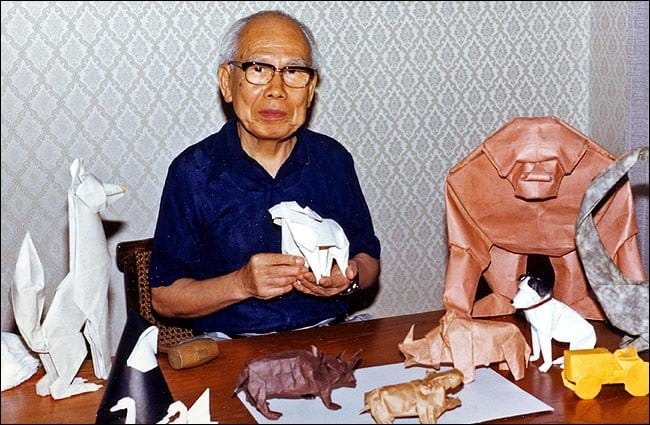
Origami, the traditional Japanese art of paper folding, is a practice steeped in history, culture, and intricate craftsmanship. The name “origami” is derived from the Japanese words “oru” (to fold) and “kami” (paper). This art form involves transforming a flat sheet of paper into a finished sculpture through folding and sculpting techniques, and typically without cutting or gluing the paper.
Origins
The origins of origami are shrouded in mystery. Paper was first invented in China around 105 A.D. It is believed that with the introduction of paper to Japan in the 6th century, the art of paper folding may have made its way there as well. However, due to the perishable nature of paper, early examples of origami are rare, and its early history is largely speculative.
In its initial stages, origami was not purely an art form but was used for practical purposes such as wrapping objects. The term “origami” itself came into common usage in the 19th century; before that, terms like “orikata” (folded shapes) were used.
Cultural Significance in Japan

In Japan, origami became deeply intertwined with cultural and religious ceremonies. One of the most significant examples is the “noshi,” a ceremonial origami fold that is traditionally attached to gifts to express good wishes. The paper crane, known as “orizuru,” is another iconic origami creation that has become a symbol of peace and longevity, especially poignant in the context of the Sadako Sasaki story and the Hiroshima bombings.

Evolution Over Centuries
Throughout the centuries, origami evolved from a ceremonial and leisure activity into a formalized art form. Initially, it was an art for the elite, as paper was a luxury commodity. However, with the advent of mass-produced paper, origami became more accessible and widespread. The Edo period (1603-1868) in Japan saw a significant expansion of origami, with the creation of numerous traditional models that are still popular today.

Artistic Aspects
Techniques and Styles: Traditional origami involves a series of folds that can range from simple to highly complex. There are various styles of origami, including the traditional Japanese origami, which focuses on minimal cuts and primarily uses square paper. Chinese paper folding, known as Zhezhi, and other cultural variations have their unique styles and techniques.

Modern origami has expanded to include new techniques, such as wet-folding, introduced by Akira Yoshizawa, which allows for more sculptural and rounded interpretations. There are also modular origami techniques, where multiple pieces of paper are folded and then combined to form a more complex structure.
Complexity and Creativity
In the 20th century, artists like Akira Yoshizawa, who is often referred to as the father of modern origami, revolutionized the craft. Yoshizawa introduced numerous new folding techniques and created thousands of origami models. His work inspired a new generation of origami artists and helped transform origami into a true art form.
Origami today is marked by its incredible complexity and creativity. Complex models can consist of hundreds of folds and require considerable skill and patience. Some contemporary artists have taken origami to new heights, creating incredibly detailed and sophisticated models that can resemble intricate sculptures.

Mathematical Connection
Origami has a profound connection with mathematics. It involves geometric concepts and problem-solving skills. In recent years, the principles of origami have been applied in engineering, architecture, and even space technology. For instance, the concept of folding large solar panels for space shuttles into compact forms for launch has been influenced by origami techniques.

Global Spread and Popularity
Origami has transcended its origins to become a global phenomenon. There are origami enthusiasts and practitioners all over the world, and it has become a medium that transcends cultural and linguistic barriers. International origami organizations and conventions have further fostered this global community, bringing people together through the shared language of art and creativity.
Educational Tool
Origami is increasingly used as an educational tool. It helps teach mathematics, geometry, and spatial understanding in a hands-on, engaging way. It is also an excellent tool for developing fine motor skills and concentration. The process of transforming a flat piece of paper into a three-dimensional object can be a powerful demonstration of geometric concepts and spatial reasoning.

Therapeutic Benefits
The practice of origami is known for its therapeutic benefits. It aids in relaxation, concentration, and hand-eye coordination. For some, the focus required for origami provides a form of meditation and mindfulness, helping to alleviate stress and improve mental well-being.
Origami is much more than paper folding; it’s a rich blend of art, culture, mathematics, and creativity. From its ceremonial roots in Japan to its modern-day status as a global art form and educational tool, origami highlights versatility and enduring appeal. As a symbol of peace, a medium for artistic expression, and a bridge across cultures, origami continues to captivate
